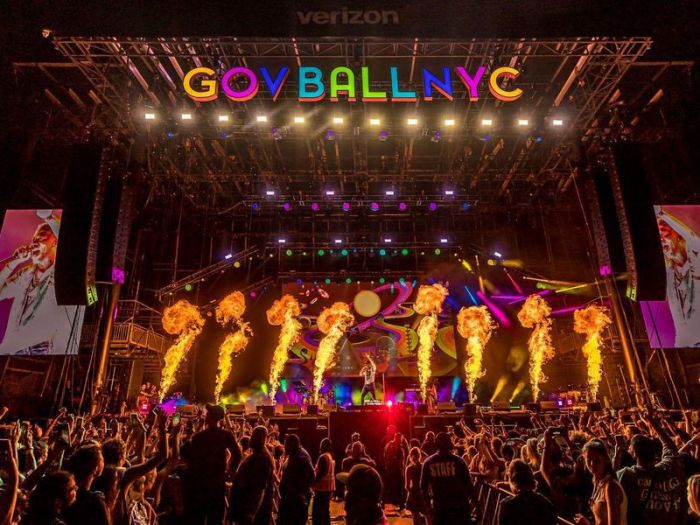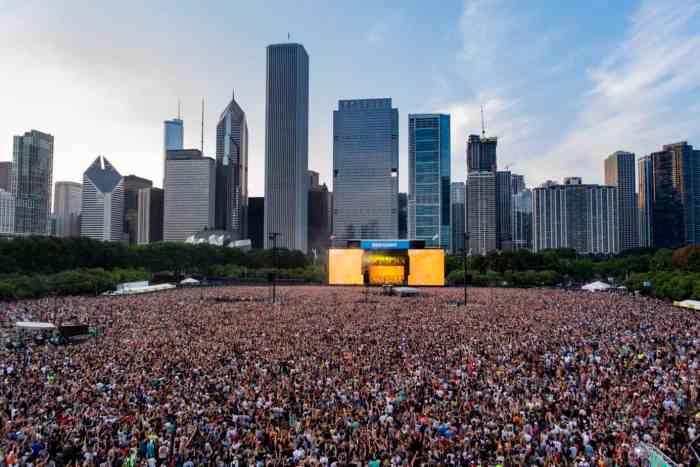Biggest Music Festivals In The Usa: Dive into the electrifying world of America’s top music festivals. From Coachella’s dazzling spectacle to Bonnaroo’s eclectic mix, we’ll explore what makes these events titans of the industry, analyzing attendance, economic impact, and the unique cultural experiences they offer. We’ll uncover the secrets behind their massive success, dissecting the factors that contribute to their immense popularity and lasting legacy.
This deep dive will examine various ranking metrics, showcasing a weighted scoring system that goes beyond simple attendance figures. We’ll profile ten of the biggest festivals, exploring their history, genre diversity, and regional variations. Prepare to be captivated by the atmosphere, the economic impact, and the sustainable practices shaping the future of these colossal events. We’ll also analyze the visual aesthetics that define each festival’s unique brand, offering a complete picture of what makes them so unforgettable.
Defining “Biggest”

Determining the “biggest” music festivals in the USA requires a nuanced approach, moving beyond simple attendance figures. A truly comprehensive ranking necessitates considering multiple, interconnected metrics that capture the festival’s overall impact and influence. Failing to do so risks a skewed perspective, potentially overlooking festivals that, while smaller in one aspect, may be significantly larger in others.
Metrics for Ranking Music Festivals
Several key metrics can be used to assess the size and impact of a music festival. However, each has its limitations and shouldn’t be considered in isolation. A balanced approach, incorporating multiple perspectives, is crucial for a more accurate and comprehensive ranking.
- Attendance: This is the most straightforward metric, simply counting the number of tickets sold or attendees across the festival’s duration. However, it fails to account for the economic impact or media reach a festival might have. A smaller festival with a highly engaged audience and significant media coverage could be more influential than a larger one with a less enthusiastic crowd and minimal press.
- Economic Impact: This metric considers the total revenue generated by the festival, including ticket sales, merchandise, food and beverage sales, and the spending of attendees in the surrounding area. This provides a broader picture than attendance alone, reflecting the festival’s contribution to the local economy. However, it can be challenging to accurately quantify all economic activities, and a festival with a large economic impact might not necessarily be considered culturally significant or widely influential.
- Media Coverage: This assesses the level of media attention the festival receives, including the number of articles, social media mentions, and television appearances. High media coverage suggests a strong public perception and influence. However, media coverage doesn’t always correlate with actual attendance or economic impact. A festival might generate significant buzz online but have relatively low attendance.
Weighted Scoring System for a Comprehensive Ranking, Biggest Music Festivals In The Usa
To create a more robust ranking system, we need a weighted scoring system that combines these three metrics. Each metric should be assigned a weight reflecting its relative importance. For example:
Attendance: 40%
Economic Impact: 40%
Media Coverage: 20%
This weighting suggests that attendance and economic impact are equally important, while media coverage plays a supporting role. The exact weights can be adjusted based on the specific goals of the ranking. Each festival would receive a score for each metric, and these scores would be weighted and summed to generate an overall ranking. For example, a festival with high attendance, moderate economic impact, and substantial media coverage would score higher than one with high attendance but low economic impact and minimal media coverage, even if the attendance numbers were similar.
This approach provides a more holistic and informative assessment of a festival’s overall size and influence.
Top 10 US Music Festivals: Biggest Music Festivals In The Usa

The United States boasts a vibrant and diverse music scene, reflected in the sheer number and variety of its music festivals. Determining the “biggest” requires a clear definition, and for this analysis, we’ll focus on festivals with the highest reported attendance figures. This list isn’t exhaustive, as attendance numbers can fluctuate and aren’t always publicly released, but it represents a solid overview of some of the nation’s most significant musical gatherings.
Top 10 US Music Festivals: A Ranked List
The following table provides a snapshot of ten of the largest music festivals in the USA, categorized by location and genre. Note that attendance figures are approximate and can vary year to year.
| Festival Name | Location | Genre(s) | Approximate Attendance |
|---|---|---|---|
| Coachella Valley Music and Arts Festival | Indio, California | Indie, Pop, Electronic, Hip Hop | 250,000+ |
| Lollapalooza | Chicago, Illinois | Rock, Pop, Hip Hop, EDM | 400,000+ |
| Austin City Limits Music Festival | Austin, Texas | Rock, Pop, Country, Indie | 450,000+ |
| Bonnaroo Music and Arts Festival | Manchester, Tennessee | Rock, Pop, Hip Hop, Electronic, Jam Band | 80,000+ |
| Rolling Loud Miami | Miami Gardens, Florida | Hip Hop | 100,000+ |
| Electric Daisy Carnival (EDC) Las Vegas | Las Vegas, Nevada | Electronic Dance Music (EDM) | 500,000+ |
| Outside Lands | San Francisco, California | Pop, Rock, Indie, Hip Hop | 75,000+ |
| Governors Ball Music Festival | New York City, New York | Pop, Hip Hop, Rock, Indie | 150,000+ |
| Stagecoach California Country Music Festival | Indio, California | Country | 75,000+ |
| Pitchfork Music Festival | Chicago, Illinois | Indie Rock, Electronic, Hip Hop | 50,000+ |
Evolution of Three Major Festivals
Examining the history of Coachella, Lollapalooza, and Bonnaroo reveals significant shifts in musical trends and festival formats.Coachella, initially a more alternative-focused festival, has evolved into a global phenomenon, showcasing a broader range of genres while maintaining its high-profile headliners. Its expansion reflects the growing commercialization of the festival scene and the increasing demand for large-scale events.Lollapalooza, originally conceived as a traveling alternative rock festival in the 1990s, has undergone a dramatic transformation.
Its current iteration in Chicago is a massive multi-genre event, reflecting the evolving tastes of a younger generation and the mainstreaming of previously niche genres. This shift showcases the adaptability needed for long-term success in the festival landscape.Bonnaroo, known for its counter-culture roots and jam-band emphasis, has maintained its core identity while incorporating a wider variety of genres.
This balance demonstrates a strategy of attracting a loyal fanbase while remaining relevant to evolving musical preferences.
Regional Variations in Musical Tastes
Geographic location significantly influences the musical styles showcased at festivals. West Coast festivals, like Coachella and Outside Lands, often feature a blend of indie, pop, and electronic music, reflecting the region’s diverse and trend-setting musical culture. Midwest festivals, such as Lollapalooza and Pitchfork, tend to showcase a wider variety of genres, including rock, hip hop, and indie, reflecting the region’s diverse population and musical influences.
South and East Coast festivals display a range of genres, with Southern festivals sometimes leaning towards country and blues influences while East Coast festivals incorporate a mix of pop, hip hop, and rock. These regional variations highlight the complex interplay between geography, culture, and musical preferences in shaping the festival landscape.
The American music festival scene is a vibrant tapestry woven from diverse genres, passionate fans, and substantial economic impact. From the meticulous planning and booking strategies to the environmental considerations and community engagement, these events are complex ecosystems demanding careful management. Understanding the key metrics, appreciating the cultural nuances, and recognizing their economic power allows us to fully appreciate the magnitude of these colossal celebrations of music and culture.
The journey through the biggest US music festivals is not just about the music; it’s about the experience, the community, and the lasting impact these events leave on the landscape of American culture.